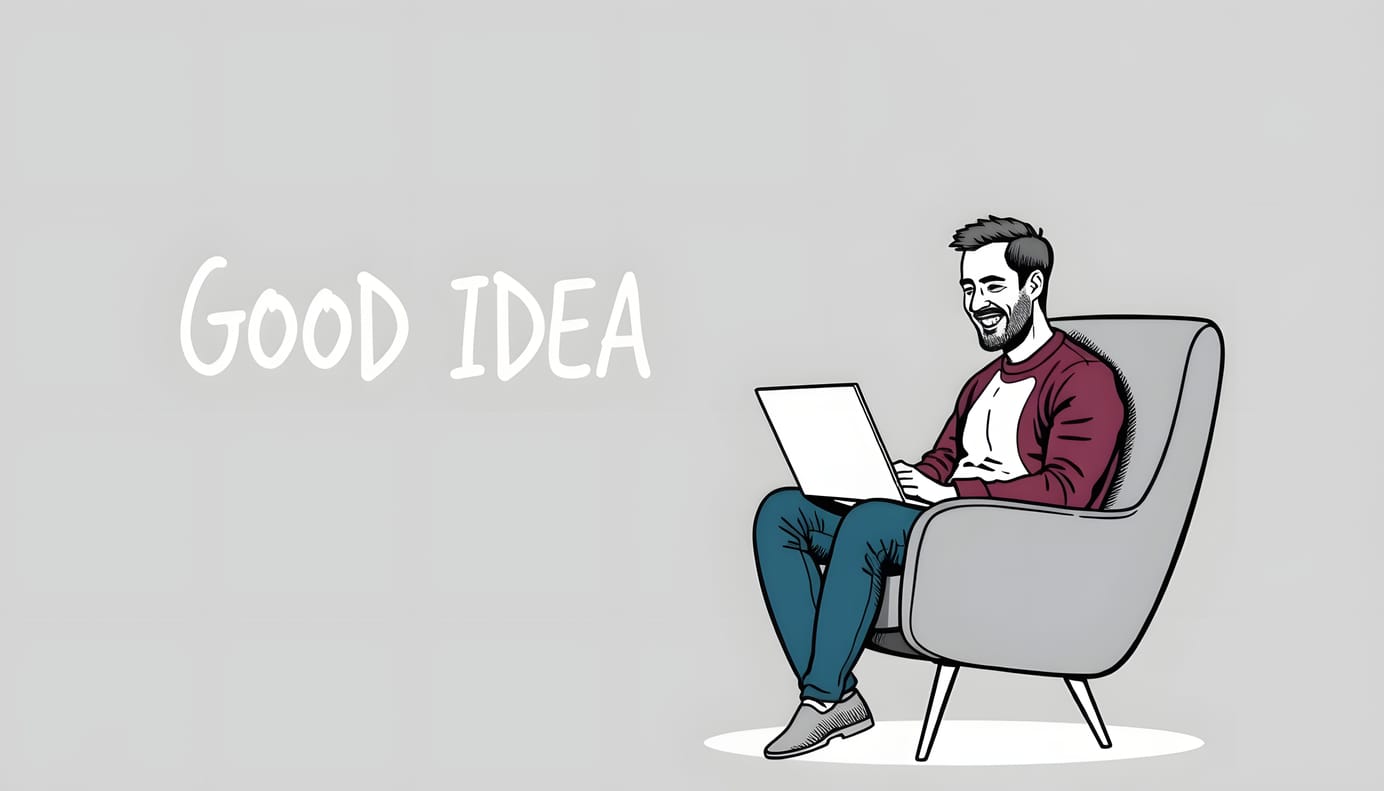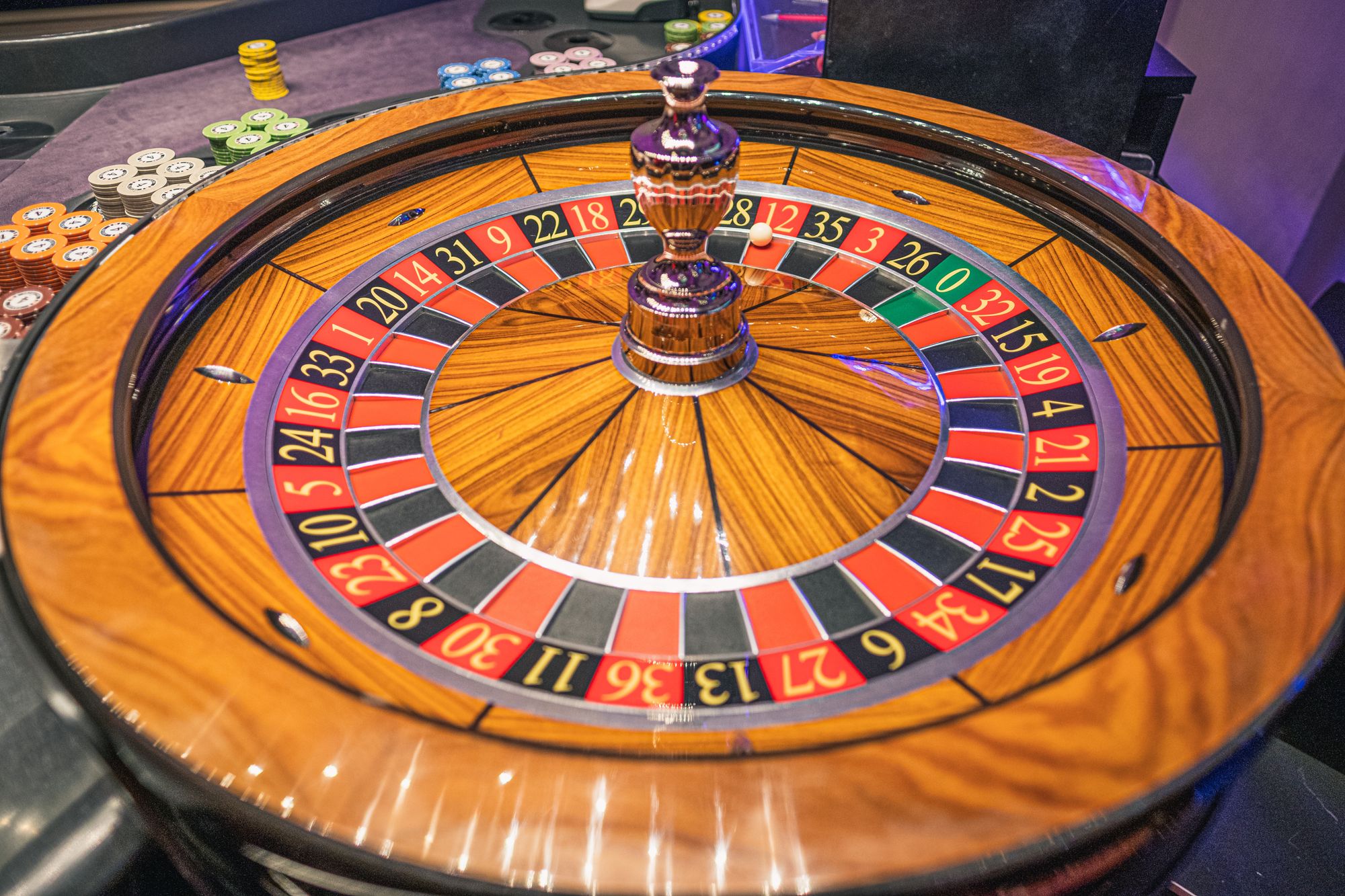The Start Smart Series Pt 2: 12 Business Strategies

Summary: Starting a business over 50 isn’t about age—it’s about agility. Discover key insights that set midlife entrepreneurs up for success.
Introduction: Entrepreneurship After 50
The idea of starting a business after 50 has become increasingly popular, sparking conversations and articles that highlight both the unique opportunities and obstacles older entrepreneurs encounter.
It’s no secret that individuals over 50 control substantial economic influence and spending power. Given this, it’s no surprise that more midlifers are turning to entrepreneurship—for reasons ranging from financial necessity and passion to a desire for independence.
There’s no shortage of stories about successful entrepreneurs over 50, often focusing on the benefits of age—wisdom, established networks, and deep industry knowledge.
These advantages are worth noting, but they don’t tell the full story. Entrepreneurship doesn’t exist in a bubble where age automatically shapes the outcome. Business success operates within a landscape of randomness, uncertainty, and unpredictability—forces that remain indifferent to whether you’re 25 or 55.
Experience, while helpful, isn’t a guaranteed ticket to success. It’s essential to move beyond the assumption that past achievements will automatically translate into future ones.
Instead of debating whether age is an advantage or a limitation, the better question is this: What should midlife entrepreneurs really focus on to succeed?
Previously, in part one of this series, we looked at some significant trends driving entrepreneurship in midlife and the common narratives surrounding starting a business after 50.
Now, in this second installment, we’ll dig deeper. I’ll share 12 crucial but often overlooked strategies designed to significantly improve your chances of success, no matter your age. By shifting the focus, we can get past the clichés and zero in on what truly drives business success.
- Read Part 1: Meet the Rising Trend of Older Entrepreneurs
- Part 2: The Secret Advantages of Midlife Entrepreneurs (You're Here)
What Fuels Midlife Business Success?
In our earlier discussion, we explored the rising numbers of entrepreneurs over 50 and why age, by itself, doesn’t define success. This raises a critical question—if it’s not just about age, what is it?
At its core, entrepreneurship—at any age—requires navigating a sea of uncertainty, randomness, and luck. The real challenge isn’t just getting a business off the ground; it’s figuring out how to harness these uncontrollable elements to your advantage.
The typical conversations around midlife entrepreneurship often emphasize experience, financial security, and overcoming biases about age.
While these points are important, they miss a vital truth: business success is rarely a straight line. Achieving success is about adaptability, learning through trial and error, and staying open to experimentation.
This article introduces 12 core strategies for building resilient and sustainable businesses. These strategies emphasize flexibility, effective risk management, and thinking beyond traditional, linear approaches.
While they’re perfect for entrepreneurs over 50, these insights are universally valuable for anyone aiming to thrive in today’s unpredictable business world.
Stop Thinking Linearly

In keeping with the linear theme, most people over 50 are well used to the traditional, linear, sequential life path of education, career, and retirement. It's been this way ever since the Industrial Revolution.
But as I argue in this post, there's a dangerous toxicity to assuming that everything will fall into place if we study hard, get good grades, and follow the rules. Linear life has conditioned us to believe that specific outcomes follow certain inputs.
As Nassim Nicholas Taleb writes, "$1 million earned as a dentist is not the same as $1 million earned as a rockstar." For every successful YouTuber, countless others never made it, and this rule applies to pretty much most businesses.
Whether we like to admit it or not, progress is as much down to high-impact, unanticipated events as it is to other factors like skills, grit, and experience. All it takes is just one random factor to determine a different outcome.
Most businesses are like a game of roulette–a single pocket holds success, while the others are filled with failures you'll never hear about.
That's why most businesses and careers are like roulette wheels containing one hundred slots. One slot will contain the success story. The other slots have the struggling followers, meaning that for every roaring success, there are countless other failures you'll never even hear about.
Why is this important? Well, any type of failure can be catastrophic. But you have more time to bounce back if you're in your 20s or 30s. When you're over 50, you may still have the time to pursue another venture, but if you've just depleted resources or are the type of person who doesn't respond well to failure, it will be much more challenging for you.
So the number one rule is to go into this with a very clear head by acknowledging you're working with the forces of randomness and uncertainty. Once you acknowledge that, you see those forces everywhere and you can start using them to your advantage.
Age as an Advantage: In What Exactly?
While the data shows that more experience gives us a leg up over younger entrepreneurs, we must avoid correlating experience with age. This false notion can breed overconfidence and complacency, making us less open to new ideas.
Some psychological research suggests that as we age, we lean towards routine and familiarity. Many will agree that younger individuals often demonstrate the ability to bounce back from unexpected life events and exhibit greater energy, stamina, and vitality. Others might be more open to relocating, putting up with irregular work hours, or travel routines - all essential elements of an entrepreneurial lifestyle.
When randomness plays a role, experience in one area may not necessarily guarantee success in another.
This potential lack of flexibility could also affect our technological abilities. Even self-proclaimed tech-savvy older entrepreneurs may struggle to keep up with younger generations' to adapt to evolving technologies and new social platforms to expand their networks.
And these social networks are vital for offering fresh perspectives, which are critical in entrepreneurial environments where innovation is key.
Again, put two identical businesses side by side: their trajectory and outcome will be different. When randomness plays its part, experience in one doesn't necessarily translate to the other.
Focus on Lifestyle First
At this stage in life, you probably know what it's like to sacrifice aspects of your life in the pursuit of a goal or ambition. Later in life, we temper our aspirations, not because we're less ambitious, but because we've witnessed the extent to which prioritizing our goals above all else can wreak havoc on family life, love life, and even health.
The reality is that a big goal can be so far off into the distant future that it may not be attainable because the sands of change are constantly shifting beneath our feet.
That's why I advocate a 'lifestyle first' rather than a 'business first' approach. Start by laying out your ideal lifestyle and then work backward from there.
For example, if you're reasonably tech-savvy and have some financial reserves, you could create a business that allows you to explore the world while generating income. If your financial resources are limited, leverage your assets to seek opportunities that supplement your income and lifestyle and enhance your overall well-being.
Start by envisioning your perfect lifestyle and then work backward to build around it.
A critical aspect of the "lifestyle first" approach is finding the balance between intrinsic motivation on the one hand and customer demand on the other. I often hear that you should find your passion by drawing on your hobbies and passions to shape entrepreneurial success.
But passion is no good if the customer isn't buying. The last thing you want to be is a starving artist at this stage of your life. More on that a bit later.
Here are some questions that can kickstart your thinking about setting up a business to support your ideal lifestyle.
- How do I want my life to be different?
- How do I want my average day to look?
- What kind of freedom do I want?
- What are my values?
Be Careful About Your Definitions of Success
Shaped by our experiences, changing values, and changing priorities, our definitions of success will evolve as we age. Still, we often find it challenging to break free from the linear life model, which has conditioned us to believe that if we do certain things, we'll achieve specific outcomes.
The success stories of Richard Branson, Steve Jobs, and Arianna Huffington can certainly be inspiring, and you will indeed find valuable nuggets beyond just their entertainment value. Yes, there will be another Steve Jobs, but who's to say it will be you?
True success isn't achieved by replicating someone else's footsteps or sticking to a rigid plan.
I'm not suggesting we all have the same grandiose ambitions. Maybe we've tempered our ambitions with age, and perhaps our goals are much closer to home, like opening a small coffee shop or online business.
But what matters is focusing on our own path and leaving room for exploration, experimentation, and adaptation along the way. We've all done enough laps around the track of life to know that while writing a business plan can be helpful, we should rely on something other than its outcomes as a definitive roadmap for success.
True success is not achieved by following the paths of others or sticking to a predefined plan. Instead, go offroad, lean into your journey, and stay open to adapting as you progress.
Focus on Self-Sufficiency
One of our biggest enemies when considering starting a business over 50 is complacency, and it rings particularly true for those who've built up a substantial nest egg and wish to use some of those funds to start a new business.
A well-known quote by Maya Angelou states, "To survive, you must thrive." Unfortunately, in the business world, it's precisely the opposite. This is because when we start a business, we can rely too often on fallbacks like, "Well, if it doesn't work out, I can always go back to what I did before."
But what's the point of that? The whole point of business is making it work the first time and using it to enhance your lifestyle. Why even start a business if you're already thinking of fallback positions? But it happens more than we think, and entrepreneurs later in life are particularly prone to this, especially if they have built up a nest egg.
One of my coaching clients had recently decided to start her own e-commerce business selling handmade products. Her challenge was a double-edged sword. On the one hand, she needed some of those funds to start her business which risked depleting her savings.
Necessity is the mother of innovation–adopt a self-sufficient mindset right from the start.
On the other hand, she kept reminding herself that if the company didn't work out, she could always fall back on her savings. I suggested she take the "small bets" approach and try making a couple of products first to see if they would sell, then try to grow the business based on pre-orders so she wouldn't need to rely on her savings.
I experienced a similar case with another coaching client who, at the age of 55, decided to open a restaurant. In this case, he had enough life savings after his initial investment into the business. However, I always had the impression he wasn't that emotionally invested in the business because he knew that if things never worked out, he could still fall back on his savings.
Both these cases illustrate the dangers of relying too heavily on funds put aside, as it can lead to a lack of urgency and a sense of complacency. And by this, I don't mean "going all in," which I suggested avoiding earlier. It means you need to develop the mentality of self-sufficiency from the outset without relying on a vast injection of funds.
Remember that necessity breeds creativity. So forget about the rainy day fund and put yourself into a self-sufficient mindset by saying that any business that requires a lot of funding is not a small bet, so you shouldn't do it anyway.
Work Backwards From Your Asset Stack
I emphasized earlier the importance of not relying too much on our age and experience alone when considering building a business after 50, and it's essential to take a more strategic approach.
At this stage, you may be tempted to dive into business ideas. But I suggest you take a step back and start by doing an "asset mining" exercise. Consider these assets the capabilities you'll require to be effective in your chosen business venture.
Also, consider the assets you've built up over your life as a reserve. Some people prefer to call it an "asset stack" or "asset portfolio," but I like "reserve" because we need to think of assets as something that can be depleted and replenished.
From an economic standpoint, these assets give you options in life. The more options you have, the more they become valuable over time because they allow you to choose different routes if one route closes off. So it presupposes a proactive approach rather than just taking them for granted.
Select a business aligned with your current assets or one where acquiring the needed assets is straightforward.
To begin, you can divide your assets into two broad categories. The more apparent assets include financial, health, and knowledge/skill assets.
The less obvious ones are assets you may not have been aware of as "assets," but once you become aware of them, they might be very applicable to your chosen venture.
These could include things like personal network, a big following on Twitter and/or LinkedIn or other platforms, your connections, credibility gained through writing a book, industry recognition, your geographic location, and even the amount of time you have to spare.
So rather than starting with a business idea or passion, choose something aligned with your asset reserve, or if you don't have a particular asset, you can acquire it with relative ease.
In other words, if a business requires startup capital of $50,000, but you don't have that and need to raise it, then spend the next six months trying to raise it, that's not the most effective use of your time.

Take Small Bets
Controlling your ambition is vital in the entrepreneurial journey. We're all familiar with the high failure rates in business, and, as I've said earlier, no amount of hard work and intelligence will protect you from that.
Here's the harsh reality: knowing what will work is impossible. And even if it works, it's impossible to know for how long.
As we age, the recovery cost from failure can be huge. We risk depleting our financial resources, and failure can significantly impact our motivation. We must understand at the outset that only some ventures are worth pursuing.
The problem with big goals and ambition is that they interfere with reality, so the only way to temper that ambition initially and to know whether an idea is really good is to test whether it passes the reality test.
This reality test involves an experimental approach - placing lots of small, calculated "bets." The benefit of small bets is that if you succeed with smaller experiments, the easier it is to pursue more challenging ones, and you become more motivated.
It's also more likely you'll gain insights more quickly into what works and what doesn't, allowing you to make small pivots. Conversely, if a small experiment fails, you can write it off more quickly and haven't lost so much time or money.
The only way to determine if an idea truly works is to test it on a small scale and see how it holds up.
The key in all this is to run several small experiments in parallel, because you need to know what will work or what won't. Ensure you commit little cost to the experiment and you commit yourself to a limited time window.
The challenge with running small experiments is that a small win automatically leads us to overconfidence, and we revert to big ambition. So we must keep experiments small and scrappy, and avoid the temptation to polish, optimize, or wait for the perfect moment.
Examples of small bets or experiments include the following:
- A tweet or LinkedIn post can be small bets in building attention on the internet and gaining followers around a particular subject.
- A small ebook of 5,000 words saved as a pdf can be a small bet for a larger book.
- Becoming a freelancer as a side gig on Upwork can be a small bet to test being an entrepreneur before leaving your day job.
Separate Your Identity From Past Wins
I've repeated this several times in this post, but controlling your ambition is vital in the entrepreneurial journey. We're all familiar with the high failure rates in business, and, as I've said earlier, no amount of hard work and intelligence will protect you from that.
Here's the harsh reality: knowing what will work is impossible. And even if it works, it's impossible to know for how long.
What got you here won't get you there!
I'm repeating this, but it's important to emphasize: as we age, the recovery cost from failure can be huge. We risk depleting our financial resources, and failure can significantly impact our motivation. Again, we must understand at the outset that only some ventures are worth pursuing.
For many people with decades of experience, our identities often intertwine with our roles. This is particularly relevant for people who've reached a certain level of seniority in their careers or have relied on previous career success to propel them forward.
The truth is, what got you here won't get you there. And the hardest pill to swallow when thinking about starting a new business is the reality that you're no longer the big cheese. You can't possibly start a new company when you're constantly looking in the rearview mirror, missing what you had yesterday.
Drop it and move on—time to shape a new identity.
Consider a Portfolio Perspective
As I said earlier, having options is vital for building a business. The more options we have, the better we can deal with unpredictability and uncertainty when building a business because we can pivot quickly into something new.
Having options in life affords us the freedom to spread our risk and to adapt with less stress and anxiety. Options allow us to stay calmer and make more informed decisions without emotions getting in the way.
One way of building out options is to decentralize your revenue stream(s) and take a portfolio approach. Relying on a single income stream, such as a salary or a sing consulting client, makes you "fragile," in the words of Nassim Nicholas Taleb. If you lose the job or your only client, it's game over.
Decentralization, on the other hand, is a sound financial strategy that diversifies your income to create a safety net.
Diversifying options in life reduces risk and helps you adapt more easily to change.
One way to decentralize your income is to create a Twitter and LinkedIn following. This audience then gives you options. You can start by selling a small digital product to them, which, if successful, can lead to the sale of larger products.
As you grow your online audience, your reputation spreads with increasing customer testimonials, leading to more followers and sales. This flywheel effect allows you to build interconnected revenue streams where you can leverage the sale of one product to create another similar product.
The beauty of this approach is that you can label specific revenue streams as "safe" and others "risky." A simple example would be keeping your day job (safe) while testing out a few side gigs (risky).
Remember, the key to all this is lifestyle first. You want to be doing something other than duplicating your time for every single revenue stream so that you end up burning out. Build a model where one revenue stream leverages another.
Think in Probabilities, Not Absolutes
You should start to see a pattern emerging by now: lifestyle first, keep your ambition in check, and focus on small experiments. Leverage good outcomes from those experiments that align well with your assets and then spread your risk by decentralizing your revenue.
Sounds easy? Here's the problem. The moment we start getting a few small wins, it's very easy to revert back to linear thinking, where we directly connect an outcome and all future outcomes. That's dangerous unless we also apply probabilistic thinking.
Life operates more like poker than chess—evaluate chances rather than presume certainties.
Former professional poker player Annie Duke illustrates probabilistic thinking very well by describing the four outcomes of a poker hand:
- A good hand leads to a good outcome
- A lousy hand leads to a bad outcome
- A good hand leads to a bad outcome
- A lousy hand leads to a good outcome
This is an excellent illustration of life itself; hence no surprise that Duke lives by her motto: "Life's poker, not chess!"
Even if we deploy our assets and achieve a few good outcomes when running small experiments, we must accept that we cannot always control the outcome. As Duke says, "There's very little we can be 100% sure of." It's much better to assess the probabilities of a future outcome by saying we're 75% certain rather than 100%.
This way, we can avoid rosy-eyed optimism, which keeps us in check. We learn to make informed decisions about the best business to choose and avoid anything that carries too much risk.

11. Recognize the Role of Luck
There are two types of people: those who acknowledge the role luck plays in our lives and those who deny the existence of luck. Ironically, most people will agree that the nature of the world is random but still deny the existence of luck. How so?
When somebody says they don't believe in luck, effectively, they think that all their outcomes in life have been determined by their decisions, hard work, and effort. But as Larry King once said, "Luck is not something you can mention in the case of self-made individuals."
But embracing the unexpected can be a powerful tool when setting up a business, and there are countless stories of innovative companies that stumbled upon opportunities. Nobody set out to invent Coca-Cola, Viagra, Nokia, the microwave, Velcro, penicillin, or insulin. All these discoveries were the result of accidental discoveries.
Accepting unpredictability can be a strong advantage when launching and managing a business.
How to stand in the way of luck? As Steve Blank once said, "Get out of the building." Get in front of people, have conversations, and experience chance encounters. Run lots of experiments. And build into your schedule some downtime where you can take a step back from life and reflect. Often, it's during these moments of downtime that the unconscious throws up many of those Aha! moments.
What's the downside of not acknowledging the role of luck? Well, you'll never be able to spot it when it arises. You won't be able to "connect the dots." And the worst problem about luck blindness is that you'll never know. And that in itself is a tragedy because we need all the luck we can get.
Master the Art of Storytelling
Ever since the dawn of humanity, storytelling has been a fundamental part of our journey to modern civilization. We use stories to connect, inspire, and learn. In today's online world, the internet provides us with a powerful platform for continuing this tradition and harnessing storytelling in our business.
Storytelling involves sharing what you learn along the way, revealing your triumphs, setbacks, and discoveries. Some people even openly share what their business earns. And doing all this on the internet makes you a more likable and approachable person because you're showing you've nothing to hide and sharing your vulnerabilities.
It's also the best way to gain attention (building an audience), credibility (sharing your experiences), and distribution (potentially selling to your audience) for your business.
Effective storytelling involves sharing not just your victories but your struggles and lessons, making you relatable and compelling.
Yes, building an audience by storytelling is hard, but the odds of success are in your favor because it allows you to make in that extra layer of optionality we talked about earlier. And the greater your audience, the greater your chances of generating luck.
That's why many entrepreneurs favor the "audience first" strategy by building a social media following, growing their network, sharing what they're learning, taking people behind the scenes and showing them what they're building, learning from others, and contributing their insights and knowledge.
And the best thing about the internet is that it's a cheap and low-risk way of running small bets when building your audience. If you tweet about what you've just learned and somebody follows you, then there's a chance thousands of others will follow you.
Summary
In closing, the entrepreneurial journey should be a journey of growth and self-discovery - at any age. But that growth can only come if we leave behind any notions that our past success or experience will somehow stand us in good stead for the future.
Undoubtedly, your life experiences can give you some valuable perspectives, but in business, we can never be sure how things will play out. You'll be constantly exposed to new insights and experiences, so be mindful of how the past serves you.
This reminds me of the ancient Chinese proverb, "Cross the river by feeling the stone." Building any business is like crossing an unfamiliar river with stepping stones. With each step we take, we're never quite sure where it will lead us, and we must be prepared to make course corrections along the way and not get ahead of ourselves. Small steps.
By taking a flexible and iterative approach, we can build a successful business that enhances your desired lifestyle, keeps stress to a minimum, and reaps huge financial rewards.
Recommend Reading
"The Encore Entrepreneur: How to Turn Your Passion into a Thriving Small Business" by Mark Henricks
- "Ageless Startup: Start a Business at Any Age" by Rick Terrien
- The Minimalist Entrepreneur: How Great Founders Do More With Less, by Sahil Lavingia
- Zero to Sold: How to Sart, Run, and Sell a Bootstrapped Business, by Arvid Kahl
- The Practice: Shipping Creative Work, by Seth Godin






